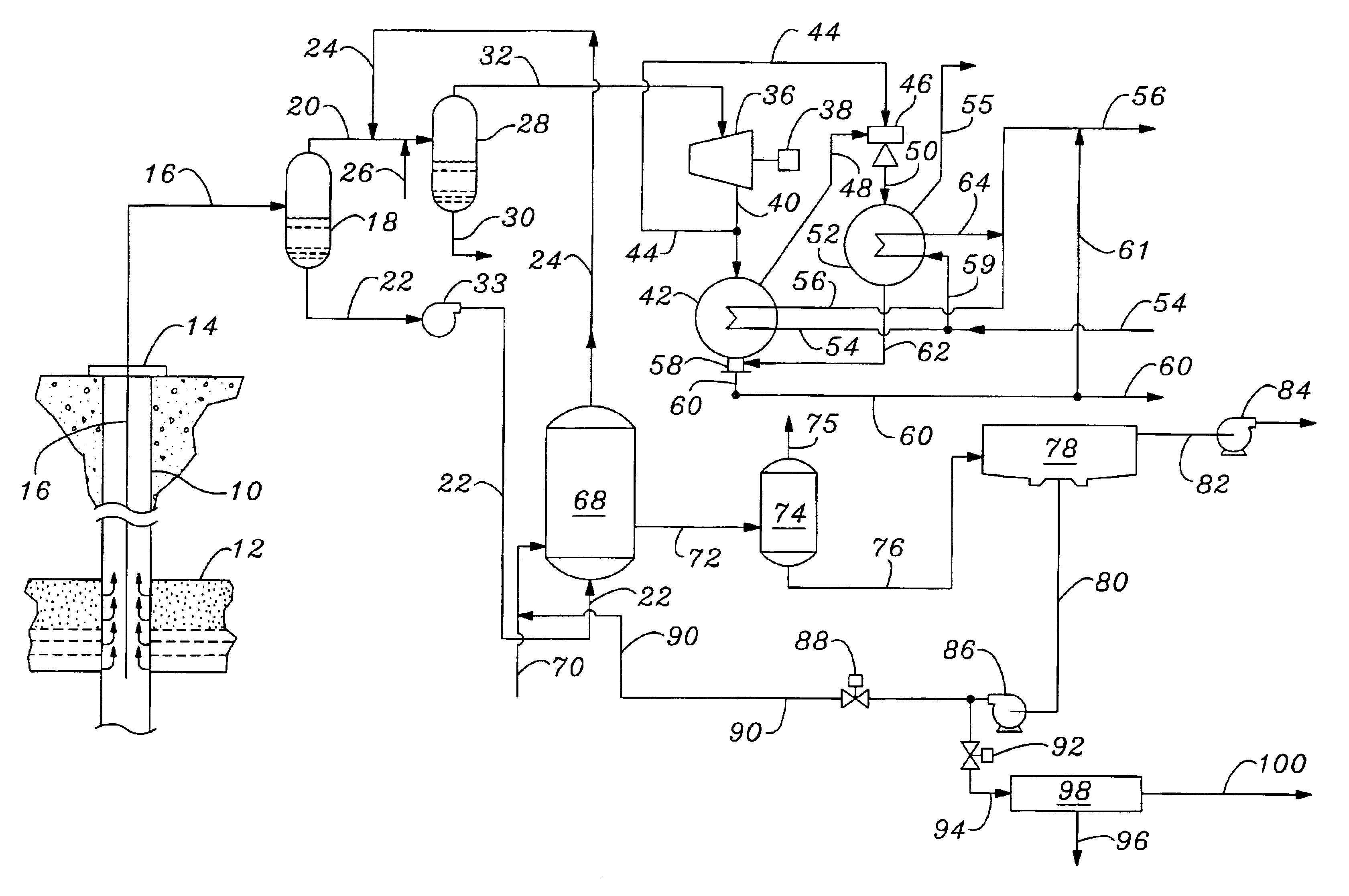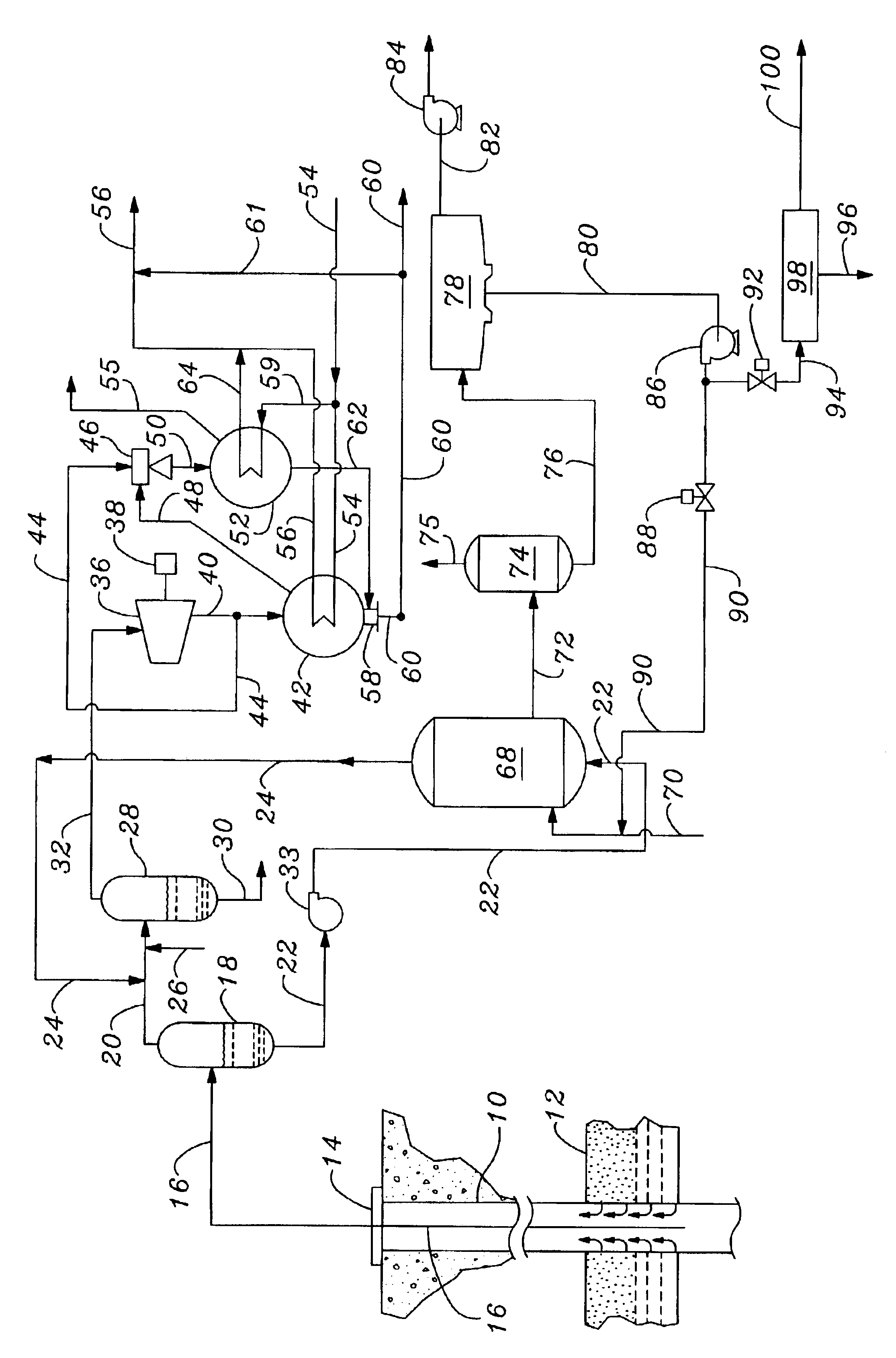Method for synthesizing crystalline magnesium silicates from geothermal brine
a technology of crystalline magnesium silicates and geothermal brine, which is applied in the direction of silicates, separation processes, silicon compounds, etc., can solve the problems of adding an additional cost to the process, fouling conventional heat-exchangers, and troublesome components of hot brin
- Summary
- Abstract
- Description
- Claims
- Application Information
AI Technical Summary
Problems solved by technology
Method used
Image
Examples
example 2
Geyser water having the analysis shown in Table 1 below and collected at El Tatio in Chile was charged into a 1 liter Hastelloy C-276 pressure reactor.
Reagent grade silicic acid (hydrated silica) powder (1.3 grams) was added to the reactor and the pH of the mixture was adjusted by adding sodium hydroxide. The headspace in the reactor was purged with nitrogen to exclude oxygen. The reactor was sealed, heated to 250.degree. C., and the mixture stirred to saturate the water with dissolved silica in an amount of 1300 ppmw. The solution temperature was then rapidly reduced to 150.degree. C. and a saturated magnesium chloride solution was injected into the reactor. The resultant mixture was stirred for 1 hour at 100.degree. C and atmospheric pressure, removed from the reactor, and passed through 12 micron filter paper. The filtered solids were washed with deionized water to remove entrained salts, and the washed solids were dried overnight at 120.degree. C. Precipitates A, B and C were ob...
example 3
A fourth run was conducted in the pressure reactor of Example 2 following the procedure discussed in Example 2 but using an actual brine obtained from the Salak field in Indonesia. The composition of the brine is shown in Table 1, and the results of the X-ray fluorescence and X-ray diffraction analyses of the precipitate D recovered in the run are shown in Tables 2 and 3 above.
Comparing the data for precipitate D with that for the reference magnesium silicates leads to the conclusion that the precipitate is primarily all kerolite. Like kerolite, precipitate D has a magnesium oxide content of about 30 weight percent and its diffractogram exhibits peaks near the d-spacings exhibiting peaks in the diffractograms of kerolite, i.e., d-spacings of about 10, 4.5, 3.2, 2.6 and 1.5.
PUM
| Property | Measurement | Unit |
|---|---|---|
| Temperature | aaaaa | aaaaa |
| Temperature | aaaaa | aaaaa |
| Temperature | aaaaa | aaaaa |
Abstract
Description
Claims
Application Information
 Login to View More
Login to View More - R&D
- Intellectual Property
- Life Sciences
- Materials
- Tech Scout
- Unparalleled Data Quality
- Higher Quality Content
- 60% Fewer Hallucinations
Browse by: Latest US Patents, China's latest patents, Technical Efficacy Thesaurus, Application Domain, Technology Topic, Popular Technical Reports.
© 2025 PatSnap. All rights reserved.Legal|Privacy policy|Modern Slavery Act Transparency Statement|Sitemap|About US| Contact US: help@patsnap.com


